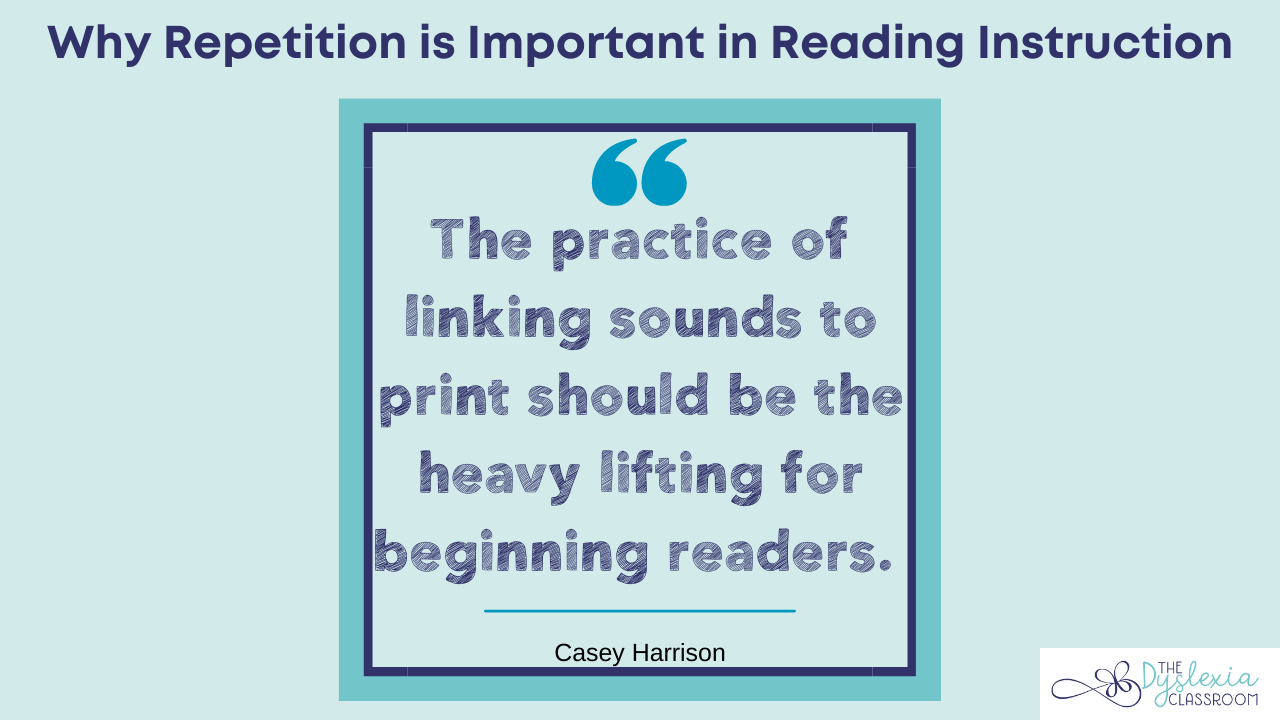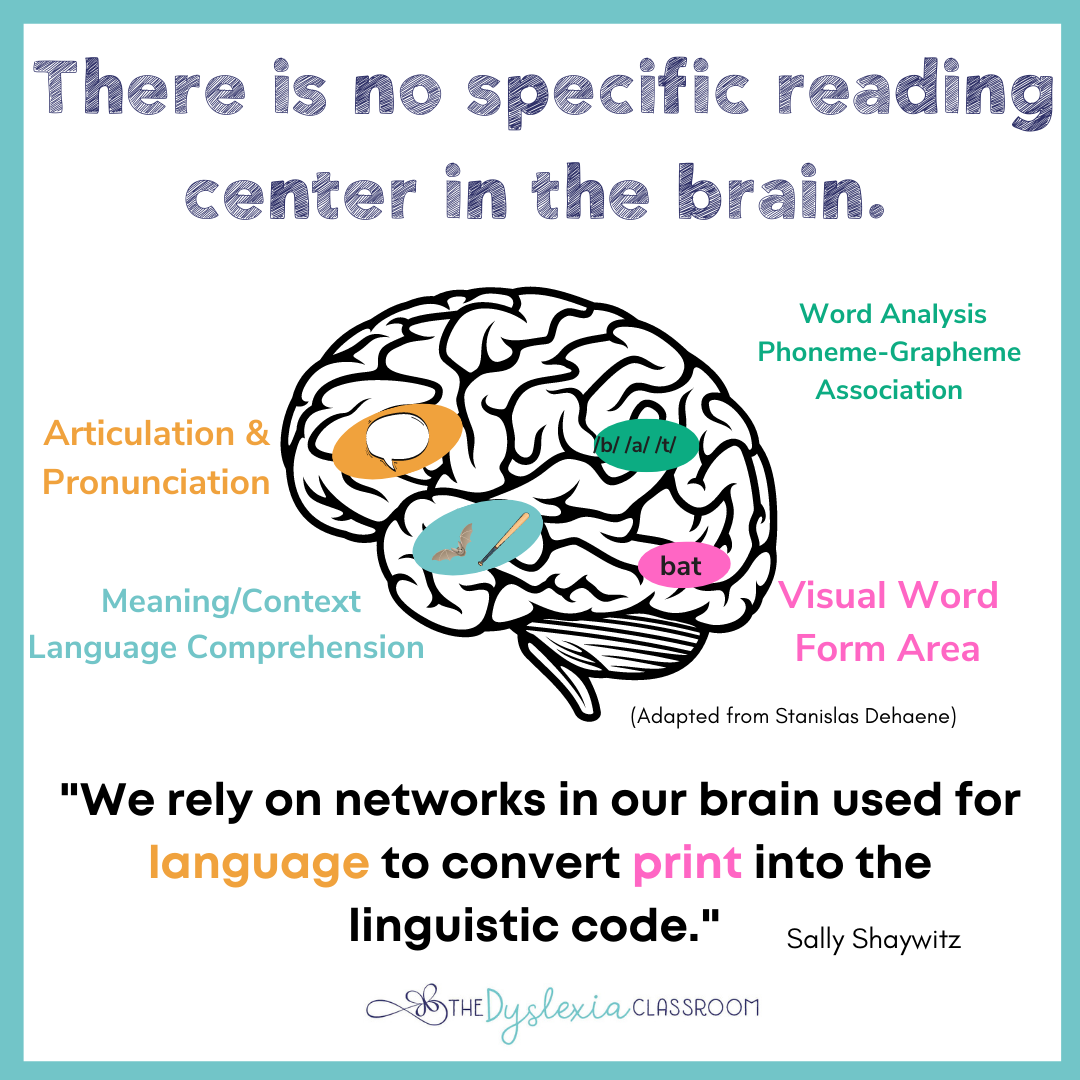Why Repetition is Important in Reading Instruction

The number of repetitions matter when planning reading instruction for the dyslexic learner, While some may believe that our lessons are filled with constant drilling of skills, this is not the case. Structured literacy is designed to weave in multiple practices within a lesson and review previously learned skills.
I like to think of it this way: when athletes learn a new skill, they practice the movement repeatedly with the goal of perfection in mind. I was a competitive gymnast, and we would practice our routines to the point of automaticity so that when it was time to perform, it was automatic. It had been practiced over and over again. This repetition made the skills stick. A key thing to remember about repetition is that perfect practice is what makes perfect — not just practice. Performing tasks repetitively and correctly is what helps the skills learned from those tasks set in ("The Power of Repetition," 2016).
Learning happens in a very similar way. With correct repetition of a skill, we create a new pathway in the brain. Repetition creates change at the synaptic level where the neurons meet. The more correct repetition we include in our reading instruction, the stronger and faster the connection between the neurons become. When we look at the reading brain, we see no one location is designated for reading. Instead, the brain relies on a network of systems, each meant for different things (language, vision, cognition), but together creates a whole new circuitry so that we may read. For this circuitry to automatize, we need to provide appropriate amounts of practice and correct repetition of skills.

The number of repetitions needed differs from person to person. Students with dyslexia or other learning differences will need many more repetitions to solidify the neural pathways to make reading automatic. It is important to note that these repetitions refer to correct responses. So often, the number of repetitions needed for students with dyslexia is significant.
The number of repetitions needed when students are learning foundational reading skills:
- 1-4 repetitions for a gifted student
- 4-14 repetitions for a typical student
- 14-40 repetitions for a struggling student
- 40-200 repetitions for a student with dyslexia or learning disability
("A Principal's Primer for Raising Reading Achievement", p. 66)
Repetition sounds simple enough, but it requires a high level of knowledge on the teacher's part to help students access the reading code. Within our reading lessons, carefully chosen repetition is embedded throughout the components of the lesson in a multi-sensory way.
Repetition in Reading Instruction
The brain needs to make new neural pathways to convert our oral language to the linguistic code, which takes practice! Children learning to read need to work with and practice decoding (reading) and encoding (spelling). This work in integrating phoneme awareness to graphemes and letter knowledge and handwriting formation is the heavy lifting that is needed during reading instruction to allow for the orthographic mapping process to occur. Our lessons should provide repetition in linking speech sounds to their letter representations (phoneme-grapheme correspondence), letter formation, reading, and spelling. This is accomplished through the following tasks:
- Reading decks (a quick daily review of previously learned letter-sound connections)
- handwriting linkages (I start my sessions with a daily review of letter formation practice - see this resource for a multi-sensory approach that links speech to print)
- Reading practice - (words, phrases, sentences, text)
- Spelling deck (students write graphemes learned for phonemes, read more here)
- Spelling practice (words, phrases, sentences)
- Instant words (previously mapped from sound to print - this is the resource that I use for instant words)
- Word building (read more here)

While some children may transfer knowledge in one to four exposures, many need more practice to automatize their reading. Those with dyslexia need explicit and systematic instruction in phonics and ample opportunities to bridge this knowledge to practice.
As educators, we are busy teaching skills and lessons but are we providing enough practice and repetition to allow for the skills to transfer to automaticity?
Practice and repetition provide the application of taught skills to become permanent, shouldn't be overlooked or brushed over, and should be a thoughtful part of our lessons.
Remember, practice makes permanent!

This information is the intellectual property of @2016 The Dyslexia Classroom. Do not use or repurpose without expressed permission from The Dyslexia Classroom. Please give The Dyslexia Classroom an attribution if you use, reference, or quote/paraphrase copyrighted materials. This includes but is not limited to blogs, social media, and resources.



